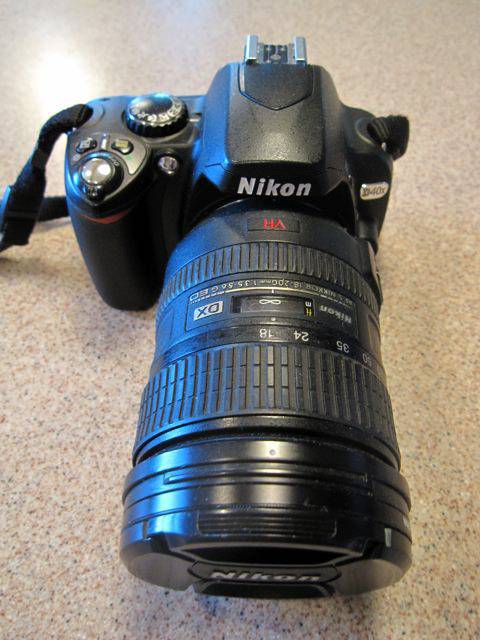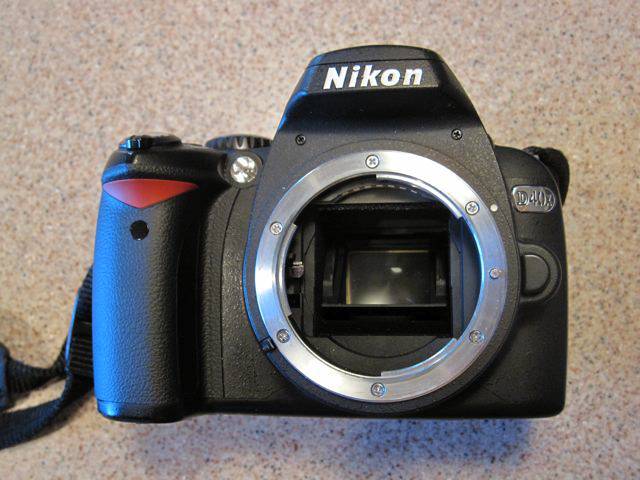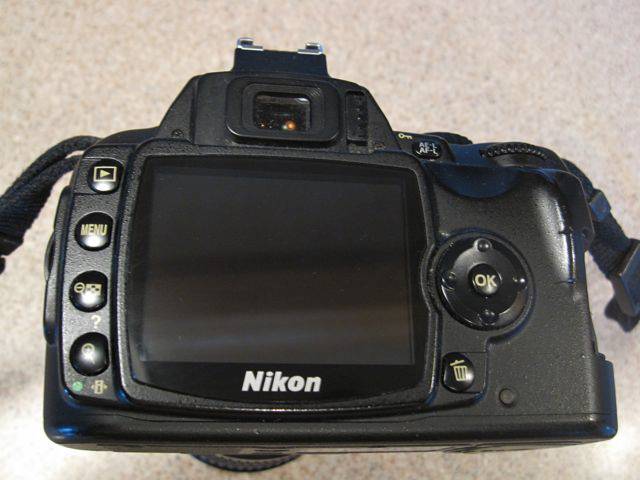

I have always used Nikon 35mm cameras - from the Nikon F through the F3; I also have a collection of Nikkor lenses. For more than a decade, I put off buying a DSLR - just using a small Canon point-and-shoot for most of my photography. I tracked the various cameras, but the pro models were too expensive, and the consumer (and prosumer) models had very small pixels (and so were relatively insensitive and noisy when used for unlit images, such as in astrophotography - as well as the natural-light handheld images that I typically take with a 35mm camera). Other than the pro models, all of these DSLRs have an APS-size CCD chip - which is roughly 1/4 of the size of a 35mm frame. Finally, in the past 2 years, Nikon introduced the D700, which is a prosumer-grade camera (costs 2X more than consumer DSLRs and 1/2 as much as Nikon's professional cameras). This camera has a full-frame 35mm CCD chip with nice large pixels, which would be perfect for astro-imaging, as well as terrestrial photography. However, the D700 still costs around $2400, so I have put off buying one. As I could not get the DSLR I wanted, I didn't buy any DSLR - so could not use my great Nikkor lenses. Finally, about 2 years ago, I found a D40x refurbished from one of the NY camera dealers for only $287 (body only, including tax and delivery). This is a great little camera for travel photography (I travel internationally constantly), but has even higher resolution than some of the prior consumer DSLRs with the same size chip; this means that the pixels are smaller - which is going the WRONG direction for astro-imaging, where I would want the biggest pixels possible, to reduce the noise on the image (although, now that I'm using a short focal length refractor, perhaps the smaller pixels will do fine; I have yet to do much astro-imaging with the Nikon). Therefore, while I have tried asto-imaging with the D40x, it certainly is not the appropriate camera to be using for this purpose. However, it has given me a little experience in DSLR astrophotography, and has allowed me to play with my Nikkor lenses on the LXD-75 mount. |
Here is the D40x without lens, looking into the mirror (that flips up when an exposure is made). The main advantage of this camera for me is that it fits all of my Nikkor lenses.
|  |
 |
Here is the back of the D40x - similar to most other DSLRs. This camera does have a "noise reduction" feature, which essentially takes a dark frame immediately after the exposure, and automatically subtracts it. However, I have found it is frustrating to wait twice as long for each image, and I know that manual calibration would be better. Therefore, I will need to take 'real' dark frames each session (i.e., taking exposures with the lens cap on, of the same duration as the target exposures, and hopefully at the same temperature). |
As of late 2010, Nikon has introduced the D7000 - a 'prosumer' DSLR that seems to have incredible performance. In addition to a 16.2 megapixel CCD (which could be incredible with short focal length scopes for wide-field images), it is reputed to have exceptional low noise performance, considering the APS-sized CCD and extremely small pixels (due to fitting the high resolution on such a small chip). The D7000 retails for about half the cost of the D700 (i.e., $1200 vs. $2400), and would be a smaller and more practical camera for travel photography. It will be interesting to see the results of astro-imaging with this camera, as it could potentially provide a lot of 'bang for the buck'. However, keep in mind that - as with all DSLRs - the D7000 CCD is not cooled (not to mention regulated cooling), so it will have inherently more dark noise than cooled astronomical CCDs. However, consdering some of the great DSLR astro-images that have been done, this camera could potentially provide the next big step in resolution and sensitivity for the price. |
One of the best references (for reviews and discussions) on Nikkor lenses is the web site of Ken Rockwell: http://www.KenRockwell.com/ |
Nikon D40x affordable APS-size CCD digital single-lens reflex camera with Nikkor lenses for budget astro-imaging